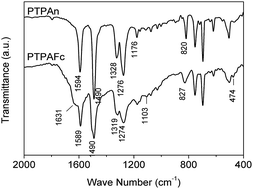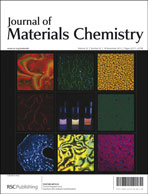In this work, a novel linear polytriphenylamine derivative was successfully synthesized by the introduction of ferrocene as a terminating group to the triphenylamine moieties. The morphology, structure and charge–discharge performance of the prepared polymer as the cathode were characterized by fourier transform infrared spectroscopy (FTIR), ultraviolet visible spectroscopy (UV-vis), scanning electron microscopy (SEM), cyclic voltammograms (CV) and galvanostatic charge–discharge testing. The results showed that the introduction of ferrocene to polytriphenylamine obviously improved the specific capacity and rate capability of the resulting PTPAFc cathodes in lithium ion batteries. Under our experimental conditions, the PTPAFc-based electrodes exhibited an initial discharge capacity of up to 100.2 mA h g−1 at 20 mA g−1 between 2.5 and 4.2 V, while PTPAn-based electrodes only presented 70.3 mA h g−1, comparatively. Also, the PTPAFc cathode specially retained over 89.7% of the initial capacity with a ten times increase of the current from 50 to 500 mA g−1. These improved electrochemical performances were ascribed to the introduction of ferrocene as the termination couple, which makes the PTPAFc main chain as a chainlike molecule structure and benefits from charge carrier transportation in the molecular polymer.

You have access to this article
 Please wait while we load your content...
Something went wrong. Try again?
Please wait while we load your content...
Something went wrong. Try again?


 Please wait while we load your content...
Please wait while we load your content...